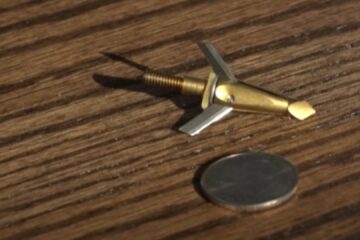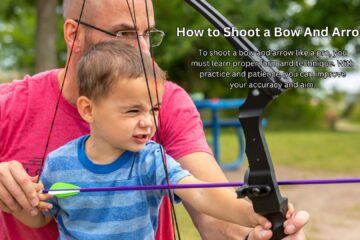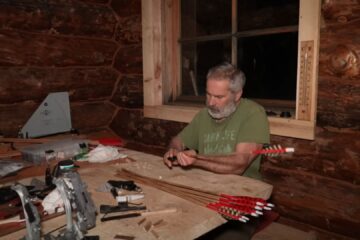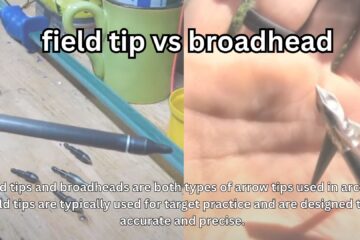Broadhead tuning is the process of aligning the mechanical and aerodynamic properties of an arrowhead to ensure accurate and consistent arrow flight. We will delve into the importance of broadhead tuning, the steps involved in the process, and provide some tips and tricks to help you achieve optimal results.
Broadhead tuning is a crucial aspect of archery that directly affects accuracy and precision. Understanding how to properly tune your broadheads will greatly enhance your shooting performance. In this section, we will delve into the importance of broadhead tuning for accuracy, the factors that can impact broadhead flight, and the common issues that arise during the tuning process.
Broadhead Tuning
Understanding Broadhead Tuning is crucial for achieving accuracy and precision in archery. This technique ensures that the broadhead aligns perfectly with the arrow flight, resulting in consistent and effective shots. Proper tuning involves adjusting various factors such as arrow spine, bow poundage, and arrow rest position to optimize broadhead performance.
Importance Of Broadhead Tuning For Accuracy
To achieve consistent accuracy and ensure that your arrows hit their target precisely, broadhead tuning is essential. When a broadhead is perfectly tuned to your bow setup, it flies true and maintains a stable trajectory. This not only improves your shooting accuracy but also maximizes the effectiveness of the broadhead’s cutting ability upon impact.
Proper broadhead tuning offers several benefits:
- Increased arrow stabilization: A well-tuned broadhead reduces arrow wobbling during flight, resulting in more stable and predictable arrow trajectories.
- Improved arrow and broadhead alignment: Broadhead tuning aligns the arrow and broadhead with the bowstring, allowing for a smooth release and reducing the risk of deflection upon release.
- Enhanced penetration: Tuning your broadheads ensures proper arrow flight and optimal energy transfer upon impact, resulting in deep and effective penetration.
Broadhead Tuning Methods
Broadhead tuning methods ensure optimal performance in bow hunting. These techniques enhance accuracy by fine-tuning the flight characteristics of broadhead arrows, resulting in precise hits on target. Mastering broadhead tuning is crucial for maximizing success in the field.
Broadhead tuning is a crucial step in achieving accurate arrow flight and reliable performance during hunting or target shooting. Fine-tuning your broadheads helps align them with your bow setup, mitigating any potential inconsistencies and optimizing accuracy. Here are three effective broadhead tuning methods to ensure your arrows fly just right:
Bare Shaft Tuning Technique:
- Shoot arrows with bare shafts alongside fletched arrows.
- Observe the arrow’s point of impact in relation to the fletched arrows.
- Adjust bow tuning accordingly based on the observed discrepancies.
- Repeat the process until both bare shafts and fletched arrows hit the target or point of impact consistently aligns.
Paper Tuning Technique:
- Position a large sheet of paper perpendicular to your shooting range.
- Stand roughly 6 feet from the paper and shoot an arrow through it.
- Examine the resulting tear pattern on the paper.
- Assess whether the tear is straight, indicating proper arrow flight, or shows inconsistencies.
- Make necessary adjustments to bow tuning, such as nocking point height or arrow rest positioning, to achieve a clean, straight tear.
Walk-Back Tuning Technique:
- Set up a target at a known distance, such as 20 yards.
- Shoot an arrow at the target, noting the impact point.
- Gradually increase the distance, moving backward in small increments.
- Shoot additional arrows at each distance and evaluate the consistency of impact points.
- Adjust bow tuning as required to ensure uniform arrow groupings as distance increases.
These three broadhead tuning methods provide valuable insights into arrow flight characteristics and allow you to identify any tuning issues that may affect accuracy. By implementing these techniques and making the necessary tuning adjustments, you can improve the performance and precision of your broadheads, ultimately enhancing your shooting experience.
Happy tuning!
Fine-Tuning Broadhead Flight
Broadhead tuning is essential for fine-tuning flight accuracy. Achieve optimal performance and precision by adjusting your broadheads to ensure seamless arrow flight. Enhance your shooting experience with expert broadhead tuning techniques.
If you’re an avid archer, you know that achieving optimal broadhead flight is essential for hitting your target with precision. By fine-tuning your broadheads, you can ensure that they fly straight and true, increasing your chances of a successful shot.
In this section, we will explore three key aspects of fine-tuning broadhead flight: adjusting arrow spine for optimal broadhead flight, proper arrow rest setup for broadhead shooting, and tuning broadheads for different shooting distances.
Adjusting Arrow Spine For Optimal Broadhead Flight
To achieve optimal broadhead flight, it’s crucial to adjust your arrow spine correctly. Arrow spine refers to the stiffness of the arrow shaft, and it plays a significant role in how the arrow flexes during the shot. Here are some key points to consider:
- Choose the right spine: Select arrows with a spine that matches your bow’s draw weight and your shooting style. Using arrows with the wrong spine can result in inconsistent and erratic broadhead flight.
- Test arrow stiffness: Conduct spine testing to determine if your arrows are too stiff or too weak. Adjusting the arrow spine will help you find the perfect balance for accurate broadhead flight.
- Make small adjustments: If your arrows are consistently showing poor broadhead flight, consider making small adjustments to the spine. Incremental changes can make a noticeable difference in precision.
Proper Arrow Rest Setup For Broadhead Shooting
Another critical factor in fine-tuning broadhead flight is setting up your arrow rest correctly. Here’s what you need to keep in mind:
- Choose the right rest: Opt for an arrow rest specifically designed for broadhead shooting. These rests are designed to minimize contact between the arrow shaft and the rest, reducing the chances of unwanted arrow deflection.
- Adjust the rest position: Fine-tune the horizontal and vertical position of your arrow rest to ensure it aligns with the bow’s center shot. This alignment is crucial for consistent and accurate broadhead flight.
- Test and adjust: Once you have set up your arrow rest, perform some test shots with broadheads to check for any inconsistencies. Make small adjustments as needed to achieve optimal flight characteristics.
Tuning Broadheads For Different Shooting Distances
Shooting distances can affect how broadheads perform in flight. By tuning your broadheads according to the shooting distance, you can improve accuracy and ensure consistent performance. Consider the following:
- Broadhead alignment: Adjust the alignment of the broadheads to ensure they are perfectly aligned with the arrow shaft. A misaligned broadhead can cause erratic flight patterns, especially at longer distances.
- Weight and balance: Fine-tune the weight and balance of your broadheads to suit different shooting distances. Lighter broadheads may be more suitable for longer distances, while heavier ones can provide better stability at shorter distances.
- Test and fine-tune: Experiment with different broadhead configurations and perform test shots at various distances. This trial-and-error process will help you identify the optimal setup for different shooting distances.
Fine-tuning your broadhead flight requires attention to detail and a willingness to experiment. By adjusting arrow spine, setting up the arrow rest properly, and tuning broadheads for different shooting distances, you can maximize your chances of hitting your target accurately.
Remember to make gradual adjustments and test the results to achieve the best possible broadhead flight.
Trouble Shooting And Problem Solving
Achieving optimum accuracy with broadhead tuning is crucial for trouble-free hunting. This process involves problem-solving techniques to ensure the arrows fly straight and true, enhancing your shooting experience.
Diagnosing And Fixing Broadhead Tuning Issues:
Bullet points:
- Broadhead tuning is crucial for accurate and consistent arrow flight. However, it can sometimes be challenging to achieve perfect tuning right away. This section will guide you through common problems encountered during broadhead tuning and provide effective solutions.
- By diagnosing and fixing broadhead tuning issues, you’ll ensure that your arrows fly true and hit their mark every time.
Common Problems And Their Solutions During Broadhead Tuning:
Bullet points:
- Problem 1: Arrow hitting left or right of the target: When your arrows consistently drift to one side, it indicates a left or right tear. This issue can be caused by various factors.
- Solution: Adjust the horizontal position of your arrow rest to achieve proper arrow flight. Move it in the opposite direction your arrows are hitting until the tear is eliminated.
- Problem 2: Arrow hitting high or low on the target: An arrow consistently impacting higher or lower than the target point can indicate an upward or downward tear.
- Solution: Adjust the vertical position of your arrow rest to align the point of impact with your target. Raise or lower the rest slightly until the upward or downward tear is eliminated.
- Problem 3: Broadheads not hitting the same point as field points: If your broadheads veer off the mark compared to your field points, it can lead to inconsistent shooting.
- Solution: Fine-tune the alignment of your broadheads by adjusting the position of your arrow rest or altering the weight distribution of your arrows. Additionally, check for loose or damaged broadhead components and ensure they are securely fastened.
- Problem 4: Inconsistent grouping or fliers: Fliers are arrows that deviate significantly from the rest of the group. They can occur due to various causes, such as inconsistent spine or broadhead misalignment.
- Solution: Carefully inspect your arrows for any defects, including straightness, weight, and spine alignment. Ensure that your broadheads are properly aligned with the shaft and that all components are in good condition. If necessary, replace or repair any faulty arrows or components.
- Problem 5: Poor arrow penetration: If you’re experiencing weak arrow penetration, it can impact the effectiveness of your broadheads in hunting scenarios.
- Solution: Evaluate your arrow setup, including arrow weight, broadhead design, and spine stiffness. Adjust these factors as needed to optimize arrow penetration. Ensure that your broadheads are sharp and properly aligned, maximizing their cutting efficiency.
Fine-Tuning Broadheads For Specific Bow Setups:
Bullet points:
- Every bow setup is unique, and achieving optimal broadhead tuning requires fine-tuning to match your specific setup.
- Consider the following factors when fine-tuning your broadheads for a specific bow:
- Arrow spine: Select arrows with the appropriate spine stiffness to complement your bow’s draw weight and length.
- Broadhead weight: Adjust the weight of your broadheads to achieve the desired balance and flight characteristics.
- Arrow length and fletching: Optimize arrow length and fletching size to promote stable flight and reduce drag.
- Center shot alignment: Ensure that your arrow rest is correctly positioned to achieve the desired arrow flight path.
- Regularly test and experiment with different combinations of these factors to find the optimal setup for your bow, maximizing broadhead accuracy and performance.
Practice And Testing
Broadhead tuning is essential for accurate shooting. By practicing and testing different broadheads, you can ensure optimal performance and precision in your hunting or archery endeavors.
Broadhead Tuning:
As an archer, consistent practice is crucial to ensuring accuracy with broadheads. Whether you’re a seasoned professional or a novice, practicing regularly will not only enhance your shooting skills but also help you fine-tune your broadheads for optimal performance. In this section, we’ll delve into the importance of consistent practice for broadhead accuracy, as well as the testing process and adjustments based on shooting results.
Importance Of Consistent Practice For Broadhead Accuracy
To achieve accurate broadhead flight and consistent grouping, regular practice is essential. Here’s why:
- Muscle memory: By practicing regularly with your bow and broadheads, you develop muscle memory, allowing your body to repeat the same motions and techniques consistently. This muscle memory plays a significant role in maintaining proper form and executing precise shots.
- Familiarity with equipment: Consistent practice helps you become familiar with your equipment, including your bow, arrows, and broadheads. This familiarity allows you to understand how each component performs and how to make necessary adjustments for optimal accuracy.
- Shooting technique refinement: Each archer has a unique shooting style and technique. By practicing regularly, you can refine your shooting technique, making necessary adjustments to improve the accuracy and precision of your shots.
Testing Broadhead Flight And Grouping
Once you have developed a consistent practice routine for broadheads, it’s essential to test their flight characteristics and grouping. Here’s how you can do it:
- Broadhead tuning: Start by shooting your broadheads at a target and observe their flight patterns. Pay attention to any inconsistencies, such as erratic arrow flight or inconsistent groupings. These observations will help identify any tuning issues that need to be addressed.
- Grouping evaluation: Evaluate your arrow groupings by shooting multiple arrows with the same broadheads. Assess the tightness of your groups to determine if your broadheads are consistently hitting the target at the desired location. Adjustments may be necessary if you notice any significant deviations.
Fine-Tuning Adjustments Based On Shooting Results
After testing the flight characteristics and groupings of your broadheads, it’s time to make fine-tuning adjustments based on your shooting results. Consider the following:
- Spine adjustments: If you notice inconsistent arrow flight or poor grouping, consider adjusting the spine of your arrows. A proper arrow spine ensures that the arrow flexes correctly during flight, thus improving accuracy.
- Broadhead alignment: Ensure that your broadheads align perfectly with the fletchings on your arrows. Misalignment can cause erratic arrow flight and impact accuracy. Make any necessary adjustments to achieve optimal alignment.
- Weight matching: Verify that all your broadheads have the same weight or are well-matched in weight. Weight discrepancies can affect arrow flight and grouping consistency. If needed, switch to broadheads with uniform weights.
- Broadhead sharpness: Regularly check the sharpness of your broadheads. Dull blades can lead to deflection and poor penetration, negatively impacting accuracy. Sharpen or replace dull broadheads as needed.
By consistently practicing with your broadheads, testing their flight and grouping characteristics, and making appropriate adjustments, you can fine-tune your setup for maximum accuracy. Remember, patience and persistence are key as you work towards achieving the desired results with your broadheads.
Happy shooting!
Broadhead Tuning Tips And Tricks
Looking to fine-tune your broadheads? Get expert tips and tricks for broadhead tuning, ensuring optimal precision and accuracy for your hunting adventures.
Expert Advice For Achieving Precise Accuracy With Broadheads:
- Choose the right broadhead type: Consider the specific game you’ll be hunting and select a broadhead accordingly. Options include fixed blade, mechanical, and hybrid broadheads, each with their advantages and disadvantages.
- Proper arrow setup: Ensure your arrows are properly spined to match your bow’s draw weight and length. This matching helps optimize accuracy when using broadheads.
- Tune with field points first: Before tuning your broadheads, start by ensuring your bow is properly tuned using field points. This initial step ensures a solid foundation before fine-tuning with broadheads.
- Adjust bow rest: Fine-tuning broadheads often requires slight adjustments to your bow’s rest. Experiment with the rest’s position to achieve optimal arrow flight and minimize any horizontal or vertical inconsistencies.
- Paper tuning technique: Utilize the paper tuning technique to evaluate arrow flight consistency and address any issues. Make adjustments as needed to align the arrow’s flight path for improved accuracy.
- Broadhead alignment: Check the alignment of your broadheads with your arrow shafts. Misaligned broadheads can lead to erratic arrow flight. Aligning the blades with the shaft minimizes flight disruptions.
- Utilize broadhead targets: Practice with broadhead-specific targets to become familiar with your broadhead’s flight characteristics. These targets are designed to handle the impact of broadheads and provide valuable feedback for tuning.
- Experiment with broadhead weight: Test different broadhead weights to identify the optimum weight for your setup. Different weights can affect arrow flight and penetration, so finding the right balance is crucial.
- Consistency in form and grip: Pay attention to your shooting form and grip. Consistency is key to achieving accurate results with broadheads. Maintain the same form and grip throughout your practice sessions.
Techniques For Fine-Tuning Broadheads In Different Shooting Conditions:
- Tune for different distances: Fine-tune your broadheads for various shooting distances. Adjustments made for shorter distances may not be optimal for longer shots, so test and adjust accordingly.
- Adjust for windy conditions: Wind can significantly affect arrow flight, particularly when using broadheads. Make adjustments to compensate for windage and maintain accuracy in challenging windy conditions.
- Consider different arrow setups: Depending on the shooting conditions, you may need to modify your arrow setup. Factors to consider include broadhead weight, arrow length, and the addition of fletching for stabilization.
- Use consistent arrow speed: Consistent arrow speed aids in consistent broadhead flight. Ensure your bow’s draw weight and draw length remain consistent to maintain arrow velocity, which assists in accurate broadhead shooting.
- Practice from various shooting positions: Broadhead flight can be affected by shooting positions. Practice shooting from different positions like standing, kneeling, and sitting to understand how each position affects arrow flight and make necessary adjustments.
Best Practices For Broadhead Maintenance And Care:
- Inspect and sharpen regularly: Regularly inspect and sharpen your broadheads to maintain their cutting efficiency. Dull blades can negatively impact penetration and accuracy. Follow manufacturer guidelines for sharpening techniques or consult a professional for assistance.
- Clean thoroughly after use: After each use, clean your broadheads thoroughly to remove dirt, debris, and blood. This prevents corrosion and ensures proper function during subsequent uses.
- Store properly: Store your broadheads in a secure and organized manner to prevent damage. Consider using broadhead cases or holders specifically designed for broadhead storage to protect both the blades and yourself.
- Replace damaged or worn-out parts: Over time, broadhead components can become worn or damaged. Replace any worn blades or other parts to maintain optimal performance and accuracy.
- Test before hunting: Always test your broadheads before heading out for a hunting trip. This allows you to verify the accuracy and ensure they are still properly tuned since your last practice session.
- Follow manufacturer instructions: Each broadhead may have specific maintenance guidelines provided by the manufacturer. Familiarize yourself with these instructions and follow them for the best results.
Remember, achieving precise accuracy with broadheads requires patience and practice. Implement these tips and techniques to fine-tune your broadheads for different shooting conditions and maintain them properly for consistent accuracy. Happy hunting!
Frequently Asked Questions On Broadhead Tuning
What Distance Do You Tune Broadheads?
Broadheads should be tuned at a distance that is specific to your setup and shooting abilities.
Is Broadhead Tuning Necessary?
Broadhead tuning is necessary to ensure accuracy and optimal performance for your bow and arrow setup.
Which Way Do You Move The Rest On A Broadhead Tune?
To tune a broadhead, move the rest in the direction that brings your arrow closer to the bullseye.
How Do You Tune Broadheads To Hit Low?
To tune broadheads to hit low, adjust the weight and alignment for optimum trajectory.
Conclusion
Broadhead tuning is a crucial step in achieving consistent and accurate performance when using a compound bow. By understanding the principles and techniques of broadhead tuning, archers can ensure that their arrows fly true and hit their intended target. Through the process of experimentation and adjustment, shooters can fine-tune their bows to achieve optimal arrow flight, minimizing the risk of erratic arrow behavior or poor accuracy.
The three key factors to consider during broadhead tuning are bow setup, arrow selection, and proper alignment. Bow setup involves adjusting the draw weight, draw length, and cam timing to achieve optimal performance. Choosing the right arrows, with the correct spine and weight, is essential for consistent arrow flight.
Finally, ensuring that the broadheads are properly aligned with the fletching is crucial for minimizing any unwanted arrow spin or wobble. By following these guidelines and investing time into broadhead tuning, archers can maximize their shooting potential and increase their chances of success in the field.





